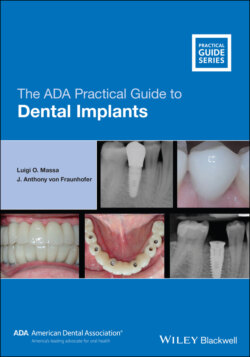Читать книгу The ADA Practical Guide to Dental Implants - J. Anthony von Fraunhofer - Страница 21
Subperiosteal Implants
ОглавлениеThe basic concept of the subperiosteal implant was that a CD rested on abutments that projected through the mucosa, Fig . 2.1. Consequently, masticatory and other stresses were transmitted directly to the supporting bone rather than to the oral mucosa as with conventional CDs. This approach enabled the surgeon to trim the basal bone of any projections or spicules of residual bone to ensure a good fit for the framework but also, incidentally, could help reduce or eliminate any painful sore spots for the final CD.
Fabricating a subperiosteal implant, however, was a long and rather involved procedure. The mandibular mucosa had to be reflected and an impression made of the exposed bone. A wax pattern was then designed on the gypsum cast and used as the pattern for a chrome‐cobalt cast framework. In a subsequent procedure, the mucosa was reflected again, and the framework placed on the exposed bone before the mucosa was restored in position and healing allowed to start. After healing, a CD could be fabricated and seated on the abutments projecting through the mucosa. There were three principal varieties of subperiosteal implant: full mandibular, full maxillary, and unilateral or single‐unit implants. The latter were smaller than full arch implants and had only one protruding abutment. They were particularly useful when used as terminal abutments for edentulous quadrants, i.e., free‐end saddle retention aids.
Figure 2.1 The subperiosteal implant.
Although subperiosteal implants were effective, the overall procedure was lengthy and involved a great deal of discomfort for the patient and often were subject to various complications [8, 9]. Further, a high degree of surgical skill was required and necessitated a close collaboration between the surgeon, prosthodontist, and the laboratory technician to ensure optimal clinical results. Provided care was exercised in patient selection, there was good overlying soft tissue and no residual alveolar bone, the prognosis could be very good with reasonably high short‐term success rates.
